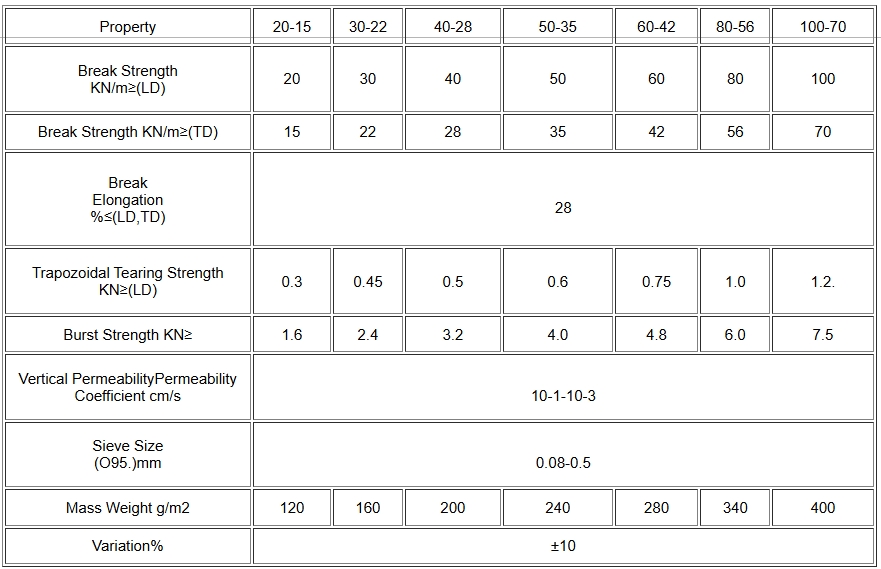编织布
ジオセル
Polyprolylene Woven Geotextile
- Geocell
- Geomembrane
- Uniaxial geogrid
- Biaxial geogrid
- Geotextile
- EVOH Geomembrane
- Warp-knitted geogrid
- Geosynthetic Clay Liner
- Composite Geonet
- Self - adhesive waterproof membrane
- Mining high-strength polyester fiber mesh
- Composite anti-permeability material
- Graebel Fix
- Safety net
- Weed control sheet
- Flexible container bag
- Dimpled Drainage Sheet
- Composite Materials
- Other synthetic materials
- Geomembrane in environmental protection engineering
- Application of geomembrane in water conservancy
- Application of geomembrane in aquaculture
- Application of geomembrane in chemical industry
- Geomembrane in mining engineering
- geocell for retaining walls
- geocell for slope stabilization
- geocell for road construction
- geocell for permafrost
- Geotextiles in slope protection projects
- Project to Strengthen Weak Infrastructure
- Landfill Isolation Project
- Application of geocell in mining area
- Application of HDPE geogrid in retaining wall
- geocell for retaining walls
- geocell for beach erosion
- geocell for landfill
- geocell for drainage
- Application of three-dimensional composite drainage network in landfill
- Application of three-dimensional composite drainage network engineering
- Parking lot new product application
Product Detail
Polypropylene woven geotextiles are a type of geosynthetic material widely used in civil engineering and construction projects. Here's a breakdown of their key characteristics and applications:
What they are:
They are manufactured from polypropylene fibers that are woven together to create a strong, durable fabric.
The weaving process results in a material with high tensile strength, particularly in specific directions.
Key Properties:
High Tensile Strength:
Woven geotextiles excel in providing reinforcement, especially when high loads are involved.
Separation:
They prevent the mixing of different soil layers, which is crucial for maintaining the integrity of structures.
Filtration:
They allow water to pass through while retaining soil particles, preventing clogging in drainage systems.
Durability:
Polypropylene is generally resistant to chemicals and biological degradation.
UV Resistance:
Although polypropylene can be susceptible to UV degradation, geotextiles are often manufactured with UV stabilizers to enhance their resistance.

Features
Application:
1.water conservancy project:Riverbanks; Dams protection; Diversion irrigation; Reservoir seepage and consolidation project; Filling sandbags.
2.Road Project: Soft foundation treatment; Slope protection; Road surface antireflection structure layer; Drainage system; Greenbelt.
3.Railway project: railway foundation reinforcement; Embankment slope strengthen layer Tunnel lining layer.
Common Applications:
Road Construction:
Reinforcing road bases and preventing rutting.
Separating subgrade from aggregate layers.
Erosion Control:
Stabilizing slopes and preventing soil erosion on embankments.
Protecting shorelines and riverbanks.
Retaining Walls:
Providing reinforcement to soil in retaining wall structures.
Drainage Systems:
Filtering soil particles in drainage trenches and systems.
Reinforcement of Earthworks:
Helping to stabilize earth embankments.
Key Advantages:
Cost-effective solution for various construction needs.
Relatively easy to install.
Increases the lifespan and stability of structures.
When considering polypropylene woven geotextiles, it's essential to select the appropriate type and specifications based on the project's specific requirements.
Specification





